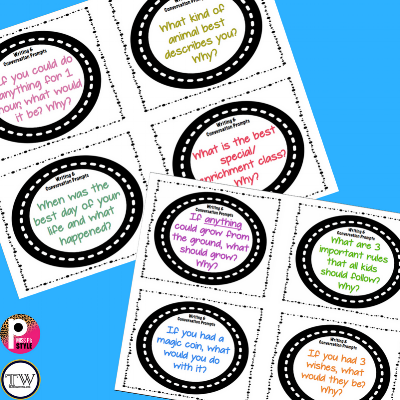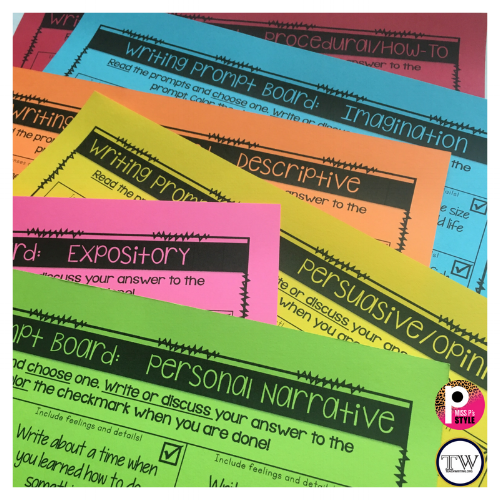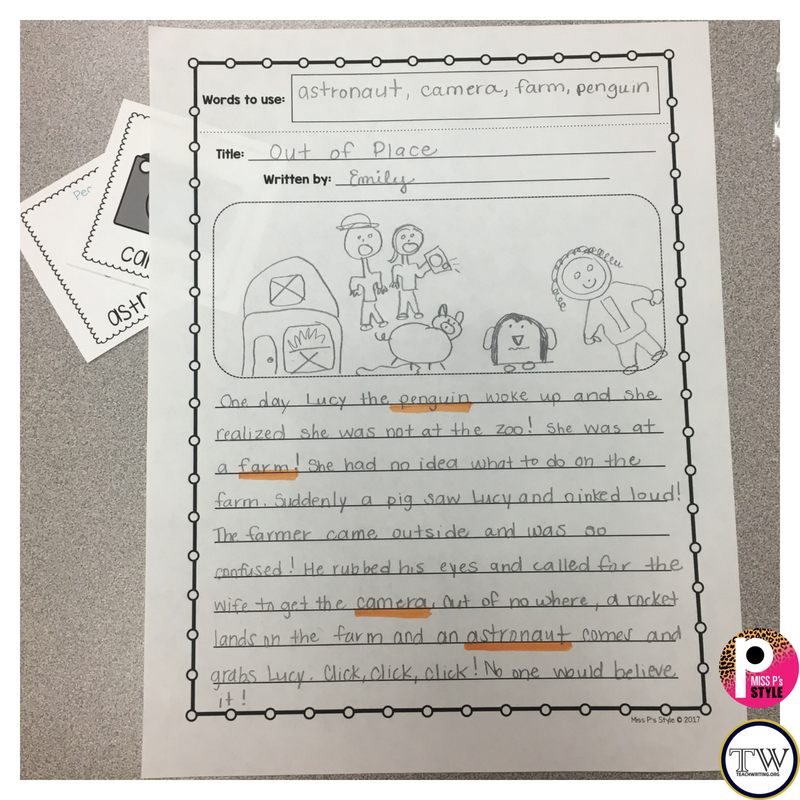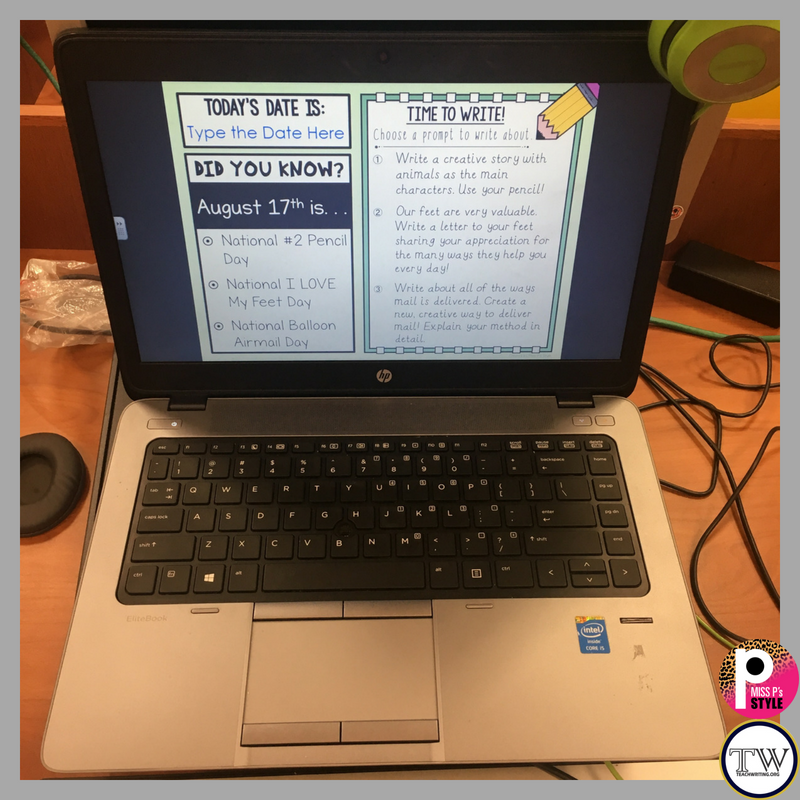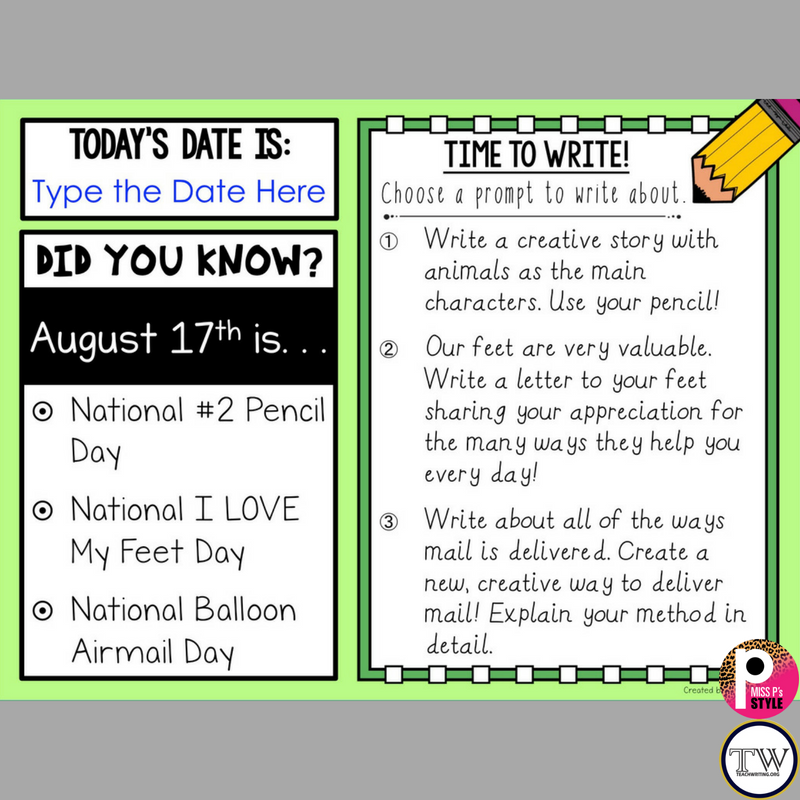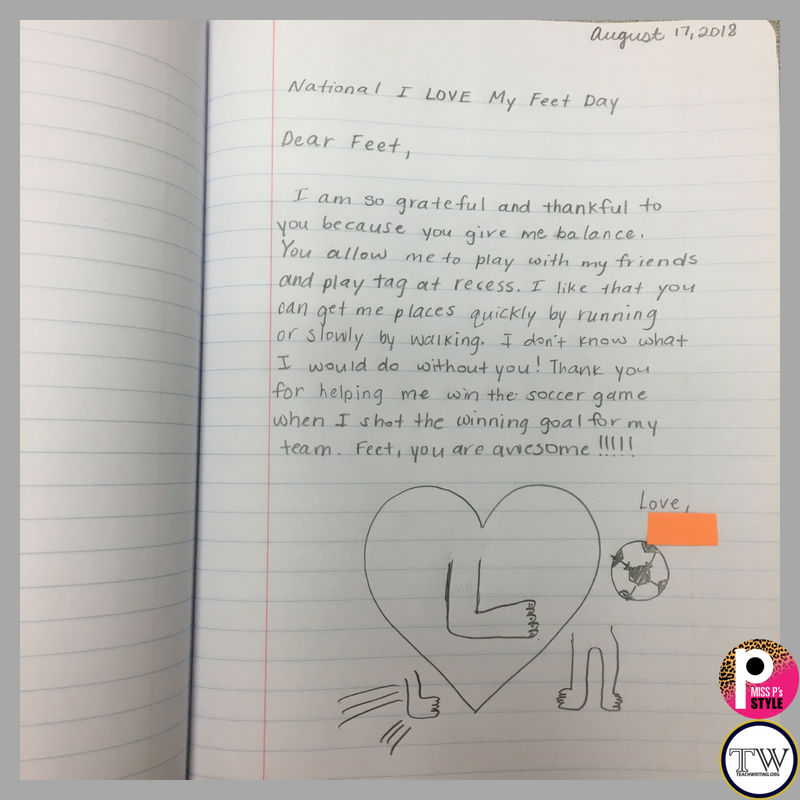4 Activities to Support Creative Writing
In a perfect world, my students would ALL finish their writing tasks at the SAME time. How awesome would that be?! But… I live in no perfect world. I constantly have my avid writers finishing quickly and my reluctant writers taking the entire writing block (plus some) to finish their assignments.
In the beginning of the year, my number one goal is to make students feel comfortable when it comes to writing. During writer’s workshop, my lessons are structured and connect to narrative or expository writing elements. In that time, I do not deviate from the standards I am responsible for teaching. Here’s where my conflict arises: I want my young writers to experience writing in a fun, free, engaging and enjoyable way; I want them to let loose, relax, smile, and laugh! I will describe four activities I keep readily available for my students that tap into their creative side. Before I share 4 activities that I use in my classroom...
Here are two easy-to-use freebies that encourage creative writing!
Writing and Conversation Prompts Freebie
These FREE writing and conversation prompts will get students thinking and speaking! They are useful during turn-and-talk or for a quick write-and-share! The easiest way for me to get my students talking and participating in the beginning of the year is to use these cards. They soon recognize THEY HAVE A STORY TO TELL! To promote participation, I cut card stock into 4's and I will allow my students to write a question or prompt of their choice onto their card. Their prompts are added to the stack and it makes for a great, simple and effective activity!
Writing Choice Boards freebie
Choice, choice, choice. These 6 FREE writing choice boards are some of my favorites to use during the school day and for at-home support. There is a specific board (Imagination) that allows students a chance to exercise their creativity! However, the other 5 boards lend themselves well for writing in a creative way!
Activity #1 : Boggle Writing
Overview:
This activity can be done individually or with a writing partner
The goal is for students to create as many words as they can using the letters given on the page; they will write the words they spell into the blank box
Students will use as many words as possible (from words they built) to write a creative story (humorous, fiction, realistic… whatever they choose)
There are 3 levels of difficulty: 8 letters, 10 letters and 12 letters (50 sheets of each)
Students feel like they are playing a game, but they are practicing important writing skills. This paper is not formatted like typical daily writing paper. Children can showcase their creative side and many times will include those detailed elements I teach them (mainly narrative writing) without me giving a reminder. They have to brainstorm, organize their thoughts and then are forced to make words connect in a way that tells a story. Ultimately, they are adding details and descriptions they otherwise may not have added since they are using the words they built. I love hearing the giggles and excitement when some choose to write a humorous nonsense story. I also love hearing the, “Awwwhhhh, pleeeeeaaassee can we have five more minutes!” when the timer signals that it is time to find a stopping point. I do encourage my students to partner up to work together on a Boggle Writing Sheet. Peer interaction, conferencing and the sharing of ideas is valuable!
Activity #2 : Creative Writing Picture Cards
Overview:
This activity can be done individually or with a writing partner
Students will choose 4-6 cards (random selection makes it interesting and fun)
They will turn over the cards and then brainstorm ways to arrange the cards to create a story (humorous, fiction, realistic… whatever they choose)
After brainstorming, they will begin creating their story and will underline each picture card word as they use it
After writing, students will illustrate a picture that best summarizes the story and will create a title
Optional: students can use these cards strictly for storytelling to practice orally sharing their stories to an audience
These creative writing cards have six different categories. I keep each category in a separate Ziploc bag for them to pull from (Color-coding the categories by printing onto colored paper or adding colored dots to the back of each card work well, too!).
Beginning of the year: I will create stories and write them during whole group instruction. This allows my students to participate in the writing task and also gives me several opportunities to model my thinking, the routine for writing and expectations. After I write a few stories with the whole class, students are able to explore on their own. To begin, they will simply select cards and practice storytelling with their turn-and-talk buddy. After storytelling, they will have the option of using the writing paper!
Mid-year: I will print the blank category cards for my students and allow them to create their own categories and pictures/words for creative writing time! The main purpose is to get students excited about writing, to take ownership in their role as a writer, and to strengthen alllllll of those skills I taught them in a way where they are taking charge!
NOTE:
A quick and easy way to adapt this would be to cut photos out of magazines or newspapers and adhere them to card stock! Real photos are fun to use, as well!
REMEMBER:
Allow students to showcase their work; it is so important to let them share their writing. This can be done during “Author’s Chair” where a student can sit in your teacher chair and read their writing to the class. You may opt to keep a class binder of student writing in your classroom library for others to read! When my students know their writing is going to be read by an audience, they tend to work a lot harder than usual! ;)
Activity #3 : Writing Center Posters and Paper
If you do not have a writing center, I highly recommend you create one. It does not have to be a large area that takes up a lot of wall space. My writing center gives me another outlet to foster my students’ creativity by way of writing. I let my students explore through the other genres and types of writing that I am not able to teach daily (or at all). Here, you can see where I have limited wall space so I simply shrunk my posters by printing 2 on a page. I then printed 4 per page to create a mini-poster set on a ring that is portable for students to take to their desks! My students LOVE using the paper choices that come which each type of writing genre! My Goal: Get my writers WRITING! An open-access writing center does the job!
Activity #4 : Monthly Writing Prompts
I use PowerPoint presentations to allow for deep, creative thinking to happen. I typically have 100% engagement as these style of prompts pique student interest! This style of creative writing can be displayed on a Smart Board, loaded onto student computers/devices, or printed as task cards in the case of limited or no technology.
Great to use for:
Morning work
Writing Warm-Ups
Work Stations/Centers
Early Finisher activities
Turn-and-Talk oral discussion and sharing during Morning/Afternoon Meeting
I love learning about national days. I am the first one in line to receive a free short stack of pancakes on National Pancake Day! This is just another way I bring creative writing into my classroom. Students are able to read through the prompts and choose the one of interest to them. A variety of genres are embedded into the prompts: narrative, informational, procedural, poetry, friendly letter, etc. It is a special moment when we can simply write for enjoyment and not to the test, so I look for those moments often and incorporate monthly writing prompts whenever I can!
About the Author:
Megan has lived all over the world due to military parents and has no hometown! She attended the University of Tennessee (Knoxville) and obtained her Bachelor and Master degrees in Early Childhood Education. Megan furthered her education by achieving her Education Specialist degree in Curriculum and Instruction with an emphasis in Reading, Literacy and Assessment. She started her teaching career in 2006 and has taught kindergarten, second and fourth grade before securing a role as a literacy specialist on her elementary school campus. She loves working with students (Kindergarten-5th grade), coaching teachers in reading/writing instruction and servicing students with dyslexia. Literacy is embedded into all subjects and areas of life and it's her goal to make reading/writing engaging, interactive and enjoyable! In her free time, you will find her journaling, creating curriculum or traveling to another state or country!
LET'S CONNECT!


